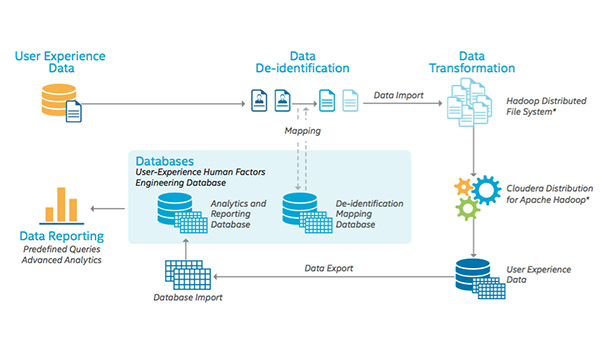Using Big Data to Improve User Experience across the Enterprise

IT Best Practices: Intel IT set a goal of defining and implementing a single user experience framework as a standard for all enterprise solutions. We developed a holistic understanding of the enterprise experience and then provided a model for other IT teams to emulate when developing products and tools.
The framework is a conceptual map of the desired user experience, using large-scale, layered storytelling. Stories are composed of experience themes (such as finding information, connecting with people, and remembering user information), user segments based on needs and goals, influences on these segments, and the activities necessary to achieve those goals. While each story focuses on a single experience, collectively these stories encompass the enterprise experience.
The experience framework provides a model of reusable insights and templates that IT teams can quickly adapt and insert into existing processes. By creating common target experiences and identifying shared priorities we can create efficiencies across enterprise services and portfolios.
We targeted the following project goals:
• Productivity. Increase employee productivity by at least 25 percent.
• Adoption. Achieve 100 percent adoption of IT solutions.
We also identified a need for a single repository of data, both quantitative and qualitative, that human factors engineers and IT professionals could use to continuously analyze user behavior.
To build, create, and refine our framework, IT needed usage data. Standard user experience research methods often produce data that is unstructured and not statistically relevant, while raw usage data can be voluminous, lack, context, and may have privacy issues. We combined traditional user experience research techniques with de-identification and big data approaches to provide our framework with a data repository that meets privacy standards and provides insight into the framework effectiveness. As a result, our single user experience framework is providing significant insights toward delivering seamless integration and is speeding the transformation of user experience.
For more information on Intel IT Best Practices, please visit intel.com/IT
Posted in:
Big Data, Information Technology, Intel, Intel IT, IT White Papers, IT@Intel

